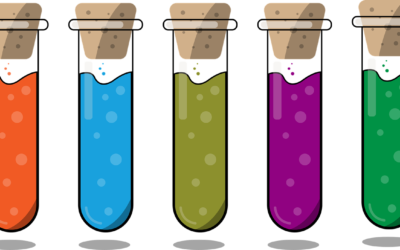Olfactory indicators, also known as smell indicators or odour indicators, are substances that change their smell or odour in response to changes in the chemical properties of their environment. They are used in analytical chemistry to detect or determine the presence of certain chemicals or to monitor specific chemical reactions. Olfactory indicators are particularly useful when other detection methods may not be feasible or when a simple visual or olfactory change is desired.
Here are some examples of olfactory indicators and their applications:
- Garlic Indicator: Garlic is an example of a natural olfactory indicator. When garlic is exposed to certain metal ions, such as mercury or copper, it undergoes a noticeable change in smell due to the formation of specific organometallic compounds. This change in smell serves as an indication of the presence of these metal ions.
- Onion Indicator: Similar to garlic, onions can act as olfactory indicators. Onions produce different odours when exposed to acidic or basic solutions. For example, onions may smell sweeter in a basic solution and more pungent in an acidic solution.
- Wet Litmus Paper: Litmus paper is a common example of a visual and olfactory indicator. It is impregnated with natural dyes obtained from lichens. When wet litmus paper comes into contact with an acidic solution, it turns red and may have a slightly sour smell. In contrast, when exposed to a basic solution, it turns blue and may have a slightly soapy smell.
- Ethyl Mercaptan: Ethyl mercaptan is an olfactory indicator used in natural gas to detect leaks. It has a strong, unpleasant odour that is easily detectable by humans even at low concentrations. The addition of ethyl mercaptan to natural gas allows people to notice gas leaks by smell, as natural gas is otherwise odourless and colourless.
- Bromothymol Blue: Although primarily known as a visual pH indicator (changes colour in acidic and basic solutions), bromothymol blue also has a faint smell that may be detected in certain situations.
Here is a table of some olfactory indicators and their characteristic smells in acidic and basic solutions:
| Olfactory Indicator | Acidic Solution | Basic Solution |
|---|---|---|
| Onion | Pleasant | No smell |
| Clove oil | Strong | No smell |
| Vanilla extract | No smell | Pleasant |
| Garlic | Strong | No smell |
| Sour milk | Strong | No smell |
| Dried blood | No smell | Rotten egg |
| Tea leaves | No smell | Strong |
| Red cabbage juice | Red | Purple |
| Hibiscus tea | Red | Blue |
| Flower petals | No smell | Pleasant |
| Citrus fruits | No smell | Pleasant |
| Vinegar | Strong | No smell |
| Lemon juice | Strong | No smell |
| Yeast extract | No smell | Pleasant |
| Aloe vera | No smell | Pleasant |
| Soap | No smell | Pleasant |
| Milk of magnesia | No smell | Strong |
| Ammonia | Strong | No smell |
| Hydrochloric acid | Strong | No smell |
| Sodium hydroxide | No smell | Strong |
| Potassium hydroxide | No smell | Strong |
| Sulfuric acid | Strong | No smell |
| Nitric acid | Strong | No smell |
It’s important to note that olfactory indicators, while useful in some situations, may not always be as precise or quantitative as other analytical methods. Their main advantage lies in their simplicity and the ability to provide a quick indication of the presence of specific chemicals or chemical reactions. As with any chemical detection method, proper safety precautions should be followed when using olfactory indicators.







0 Comments